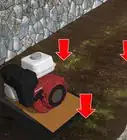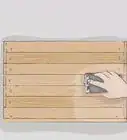This article was co-authored by wikiHow Staff. Our trained team of editors and researchers validate articles for accuracy and comprehensiveness. wikiHow's Content Management Team carefully monitors the work from our editorial staff to ensure that each article is backed by trusted research and meets our high quality standards.
This article has been viewed 14,052 times.
Learn more...
Building an arbor is a great way to frame a walkway, make a path look nicer, or provide some shade for backyard lounging. It might seem like an intimidating project, but it's a fairly simple process that just requires a bit of determination. Just grabs your tools, your wood, and set aside a few weekends so you're not cramming together all the work at once!
Steps
Gathering Your Materials
-
1Purchase the necessary wood materials. Head to your local home hardware store. You can either purchase your wood in pieces and cut them to size yourself or ask the hardware store staff to do so for you. For a project like this, the latter is the much easier option. You need the following:[1]
- Six 7.5 by 7.5 inch (19 cm × 19 cm) pieces of 1.5 inch (3.8 cm) thick plywood
- Three pairs of 2 by 2 by 8 inch (5.1 by 5.1 by 20.3 cm) beams
- Four 8 by 8 foot (2.4 m × 2.4 m) posts 10 feet (3.0 m) long
- Seven 2 by 6 inch (5.1 by 15.2 cm) rafters 17.5 foot (5.3 m) long
- Nine 1 by 2 inch (2.5 by 5.1 cm) lattice strips 10.5 feet (3.2 m) long
-
2Choose rot-resistant wood to prevent decay. Redwood and cedar are great choices that require minimal maintenance. If this is your first time, redwood is the lightest and easiest to work with. It also weathers very well. Other cheaper options include pressure-treated fir or pine.[2]
- Always check for warped pieces whenever you purchase wood.
- If you plan to paint your arbor, redwood is best.
Advertisement -
3Buy the remaining cement, pipes, screws, and tools. After you get your wood, purchase 12 bags of cement mix—roughly 2 for each hole. Afterward, you need six 42 in (110 cm) long galvanized pipes 1⁄2 inch (1.3 cm) in diameter, a box of 3.5 inch (8.9 cm) galvanized decking screws, an electric drill, a circular saw, and measuring tape.[3]
- Skip the circular saw if you had a professional cut your wood for you.
- Purchase cement mix designed for fences and posts.
-
4Cut your wood pieces to size if they aren't already. If you didn't get your wood cut to size by a professional, use a circular saw to do so yourself. Mark off the ends to be cut with a ruler and pencil and align your blade above it. Now, clutch the rear handle trigger on the saw and pull the saw down across the wood with your dominant hand. Always hold it firmly in place with your non-dominant hand.[4]
- Be sure to apply downward pressure with your non-dominant hand to keep the wood still.
- Always let the shortest end of the piece of lumber hang when cutting lumber to preventing jamming.
Installing the Foundation
-
1Dig 6 holes 18 inches (46 cm) wide and 24 inches (61 cm) deep. Start by thrusting a shovel into the soil and moving it side to side and forward and backward. After the soil is loosened, grip the middle of the handle with your non-dominant hand and the top with your dominant hand and start digging. Repeat this process to create 6 holes, each spaced 11.68 feet (3.56 m) apart vertically (along the length of the beams) and 4.77 feet (1.45 m) apart horizontally (along the length of the rafters).[5]
- Saw through any large roots with a reciprocating saw or thrust the shovel down into them until they break.
- Knock any rocks loose with a steel bar.
- Use a clamshell digger to remove large portions of loose soil.
-
2Fill each of the holes with cement. Combine the cement mix and water in a wheelbarrow according to the manufacturer's directions. Now, tilt the wheelbarrow forward gently to pour the cement into each hole. Afterward, slide a hand float over the surface of the cement until it's level with the ground.[6]
-
3Insert galvanized metal pipes into the center of each cement hole. Take your 42 inch (110 cm) long galvanized pipes and position them in the center of the holes with 18 inches (46 cm) sticking out from the top. Let the concrete sit for at least 24 hours before moving to the next step.[7]
- Be sure that the pipe has a diameter of 1⁄2 inch (1.3 cm).
-
4Drill 18 inch (46 cm) deep center holes into the bottom of each post. Attach a 1.5 inch (3.8 cm) spade bit or auger bit to an electric drill. Now, drill a center hole into the bottom of each post to fit over the galvanized metal pipes.[8]
- After drilling your holes all 18 inches (46 cm) of the galvanized piping should fit into each one. The remaining 24 inches (61 cm) should be covered by cement.
-
5Lower the posts over the galvanizing pipes. Align each post vertically beside the pipes so that the flat ends face the sky and the hole faces the ground. Now, lift each one up and align their holes over the piping. Once the holes are aligned, slowly lower them onto the piping. Make sure that each post is perfectly vertical and makes a 90-degree angle to the ground.[9]
- Place a cedar shingle shim underneath any posts that are not completely vertical.
Connecting Your Beams and Rafters
-
1Connect 3 pairs of double 2 by 2 by 8 inch (5.1 by 5.1 by 20.3 cm) beams. Lay each pair of beams parallel and 7.5 inches (19 cm) apart from each other. Now, attach two 7.5 by 7.5 inch (19 cm × 19 cm) pieces of pressure-treated plywood to your beams—one on each end 2.91 feet (0.89 m) from the edges of the beams. Fasten them to the bottom edge of the beams using 6 3.5 inch (8.9 cm) galvanized decking screws, taking care to space them out evenly.
- The plywood both connects the beams and acts as the barrier between your beams and the posts.
- Drive the screws straight down into the beams at a 90-degree angle to the plywood.
- Make sure to connect each piece of plywood to each beam with 3 screws.
-
2Attach each pair of beams horizontally to 2 posts. The beams are the pieces of wood that connect each post horizontally at the top and lay the foundation for the rest of the arbor. Raise each pair up and place them onto the posts, making sure that the plywood plates align with the top of them. Afterward, drive 4 more galvanized decking screws down through the plywood plates and into the posts.[10]
- Have a friend help you do this or use an 8 foot (2.4 m) tall ladder.
-
3Connect 17.5 foot (5.3 m) long rafters across your beams. The 2 by 6 inch (5.1 by 15.2 cm) rafters lay on top of the beams horizontally. Start by laying down the rafters on top of the beams. Space them about 20 inches (51 cm) apart, making sure that they all run perpendicular to the beams and parallel to each other. Now, drive 3.5 inch (8.9 cm) galvanized decking screws at a 45-degree angle through the rafters and into the beams.[11]
- Alternate between driving screws through each side of the rafter.
-
4Connect nine 10.5 foot (3.2 m) long lattice strips to the rafters. The 1 by 2 inch (2.5 by 5.1 cm) lattice strips are the final structural part of the arbor. Lay all 9 strips vertically across the horizontal rafters, making sure they are 21.5 inches (55 cm) apart. Now, drive 2.5 inch (6.4 cm) decking screws down through the lattice strips and into the rafters.[12]
- Take care to drive the screws down at a 90-degree angle to the rafters.
- Make sure each lattice strip hangs over the first rafter by about 2 inches (5.1 cm).
- Take care to ensure that each lattice strip is parallel to one another and perpendicular to the rafters.
Things You'll Need
- Wood
- Measuring tape
- Galvanized decking screws
- Table saw
- Circular Saw
- Level
- 8 foot (2.4 m) tall ladder
- Cement
- Electric drill
- Drill bits
- Cedar shingle shims
Warnings
- Excercise extreme caution when working from heights.⧼thumbs_response⧽
References
- ↑ https://www.thisoldhouse.com/how-to/how-to-build-shade-arbor
- ↑ https://www.bhg.com/home-improvement/outdoor/pergola-arbor-trellis/how-to-build-a-simple-entry-arbor/
- ↑ https://www.thisoldhouse.com/how-to/how-to-build-shade-arbor
- ↑ https://www.familyhandyman.com/tools/circular-saws/circular-saw-tips-and-techniques/view-all/
- ↑ https://www.familyhandyman.com/garden-structures/fences/how-to-dig-a-hole-pro-tips/view-all/
- ↑ https://www.familyhandyman.com/masonry/pouring-concrete/how-to-pour-concrete/view-all/
- ↑ https://www.thisoldhouse.com/how-to/how-to-build-shade-arbor
- ↑ https://www.thisoldhouse.com/how-to/how-to-build-shade-arbor
- ↑ https://www.thisoldhouse.com/how-to/how-to-build-shade-arbor
About This Article
To make an arbor, start by purchasing six 7.5 by 7.5 pieces of thick plywood, three pairs of 2 by 2 by 8-inch beams, four 8 foot posts, seven 2 by 6-inch rafters, and nine 1 by 2-inch lattice strips. In addition to the wood, make sure you have cement mix and six 42 inch long pipes. Once you’ve gathered your materials, dig 6 holes and use the cement and pipes to make a foundation. After that, lower the posts onto the pipes and connect them horizontally using pairs of wooden beams. With the beams screwed in place, attach the rafters across the top of your beams about 20 inches apart. Then, screw the lattice strips along the sides of your arbor to complete the look. For more tips, including how to choose rot-resistant wood, read on.
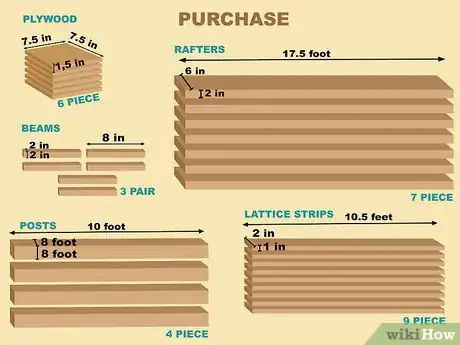

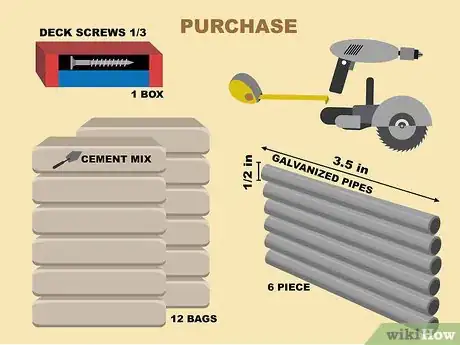
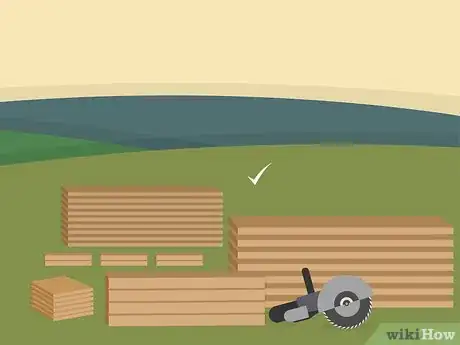

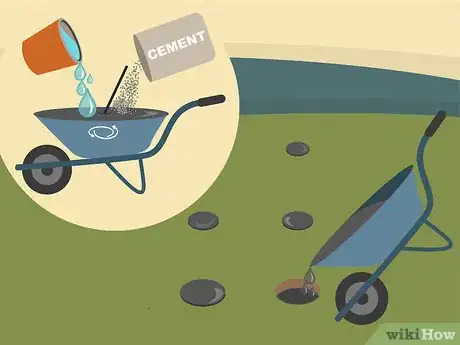
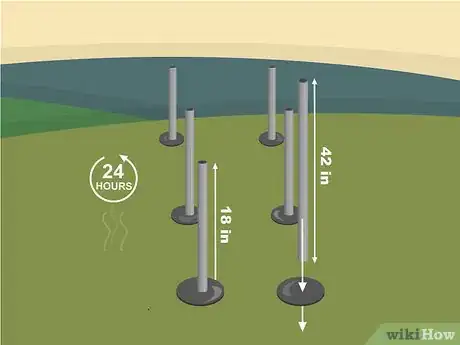
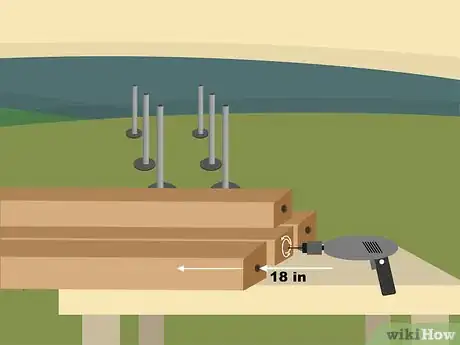
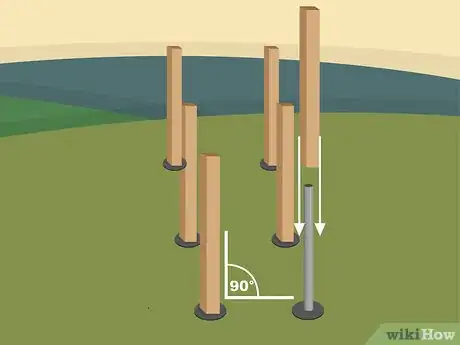


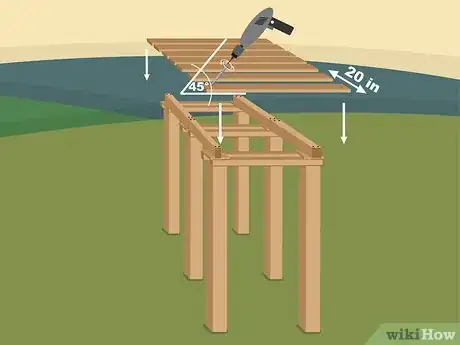
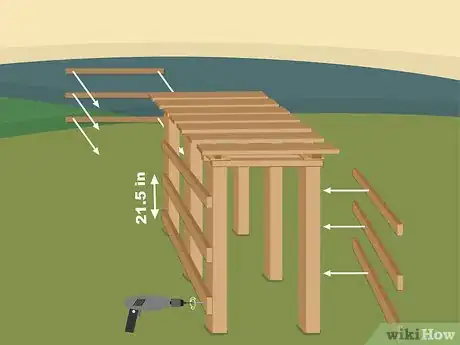







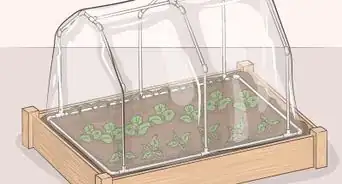
-Oven-Step-15.webp)











